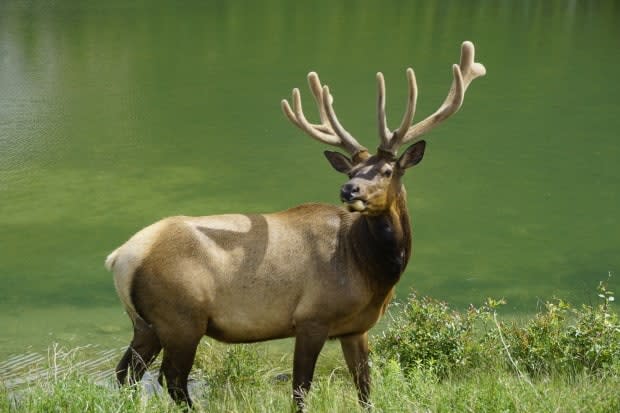'I'm not that optimistic': Wilderness society warns Sask. may not reach 2020 goal to protect land
As the Saskatchewan government considers how it will cut greenhouse gas emissions and end the province's reliance on coal, it appears one of its more basic commitments to ease the impact of climate change may take longer than promised.
Prairie Resilience — the provincial government's strategy on climate change — highlights a goal of protecting 12 per cent of Saskatchewan's land base by the end of 2020.
"I'm not that optimistic," said Gord Vaadeland, executive director of the Saskatchewan chapter of the Canadian Parks and Wilderness Society (CPAWS).
In August, CPAWS issued a report suggesting that "climate change and biodiversity loss are among the most pressing challenges facing global society and the natural world."
"The protection of biodiversity and natural places provides us with the best opportunity we have to slow down the effects of climate change," said Vaadeland.
"We are also facing a situation where we have we have all kinds of critters on the verge of extinction."
Much more work to do
Protected areas play a vital role by helping to act as carbon sinks and protecting biodiversity, advocates say.
Nationally, the federal government set a goal of protecting 17 per cent of land and freshwater by 2020.
Both levels of government may fail to meet their targets.

Nationally, as of this year, 11.8 per cent of Canada's land mass has been set aside for conservation. The latest data shows that as of last year, Saskatchewan had protected just over nine per cent of land, with about 1.8 million hectares to go.
"We're continuing to work towards that target and certainly we've got a little ways to go," said Chuck Lees, an assistant executive director with the Fish, Wildlife and Lands branch of Saskatchewan's Ministry of Environment.
"We're focusing both on the quality of protected areas as well as quantity," he said, adding the province is now initiating its protected areas strategy.
"We want to develop a strategy that provides a bit more of a focus on how do we get to the target — knowing that there's challenges to get there — in a way that balances environmental and economic benefits."
Northern region could soon be protected
The provincial government is also very close to being able to set aside the Tazin Lake Upland ecoregion, some 100,000 hectares in size near the border with the Northwest Territories. The government describes the region as almost mountainous, with many small lakes and streams. It's a region important to First Nations, and key to traditional living.
"We're not just waiting for the strategy … we are finding opportunities where we can," said Lees.
At some point we're going to have to … figure out not just how do we meet this 12%, but then how do we adapt to the fact that the rest of the world has moved on … to more aggressive targets. - Gord Vaadeland, CPAWS
"There are some very encouraging signs," said Vaadeland.
Among them, he noted Saskatchewan's work in protecting woodland caribou herds by understanding their ecology and trying to make sure their habitat is protected.
At the same time, CPAWS is challenging Canada to move beyond the 2020 target of protecting 17 per cent of its land, suggesting that target is "woefully below what results of most scientific studies show are necessary to meet widespread conservation goals, such as maintaining viable populations of native species."
There's a "huge gap," Vaadeland says, in where the province is now, and the conservation goals it will need to meet.
"At some point we're going to have to … figure out not just how do we meet this 12 per cent, but then how do we adapt to the fact that the rest of the world has moved on even from the 17 to much more aggressive targets," he said.
Competing interests
That won't be easy, Vaadeland worries, in a province like Saskatchewan, where there is a strong focus on an economy that relies heavily on a need to access natural resources.
Vaadeland went so far as to suggest that if protecting land involved only the Ministry of Environment, the 2020 goal might be easily reached.
"The problem appears to be that the Ministry of Energy and Resources just doesn't want to let go of anything, quite frankly," he said.
"So, you know, there are mining interests or other industrial interests, and they [energy and resources] just really hang on to things."

